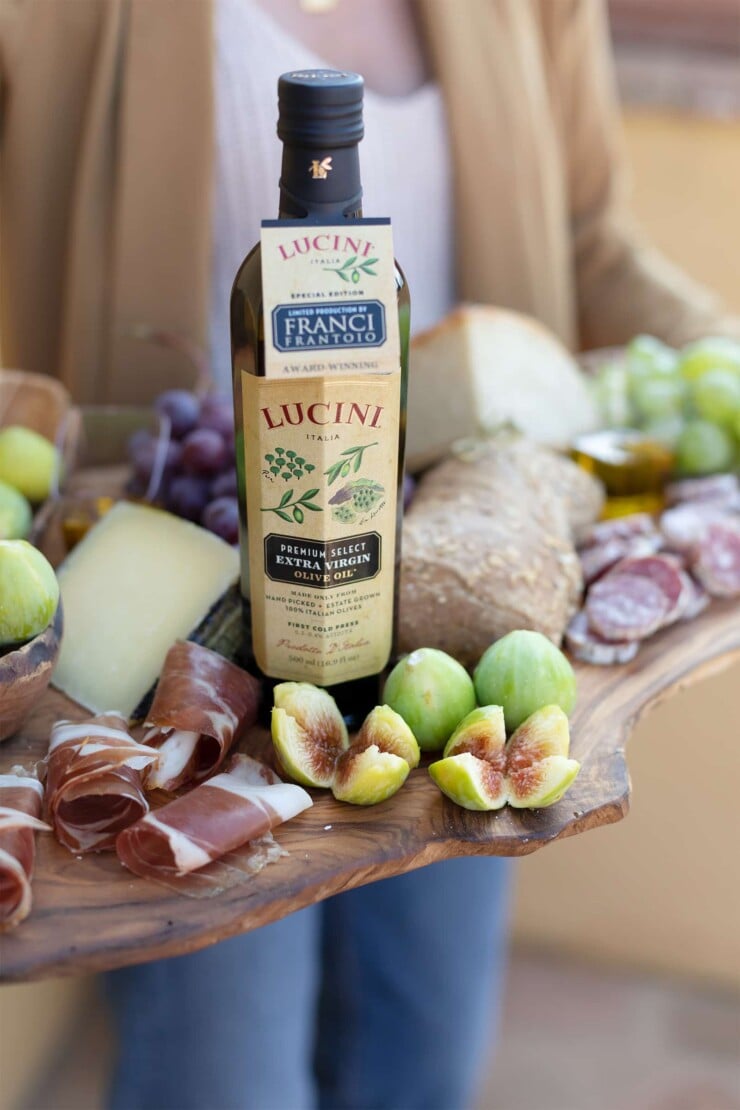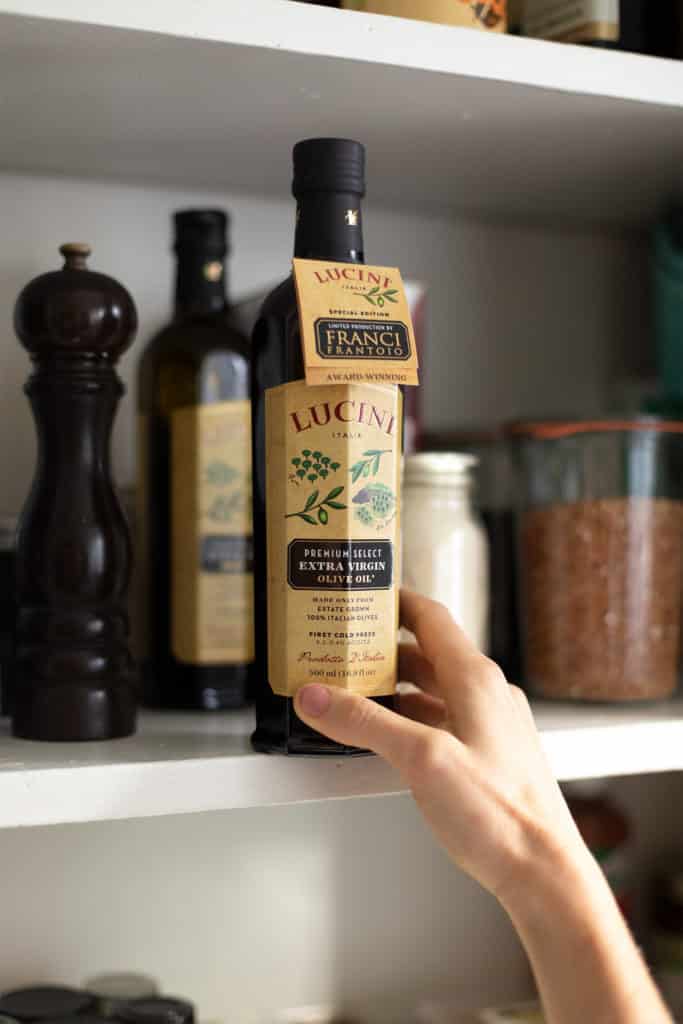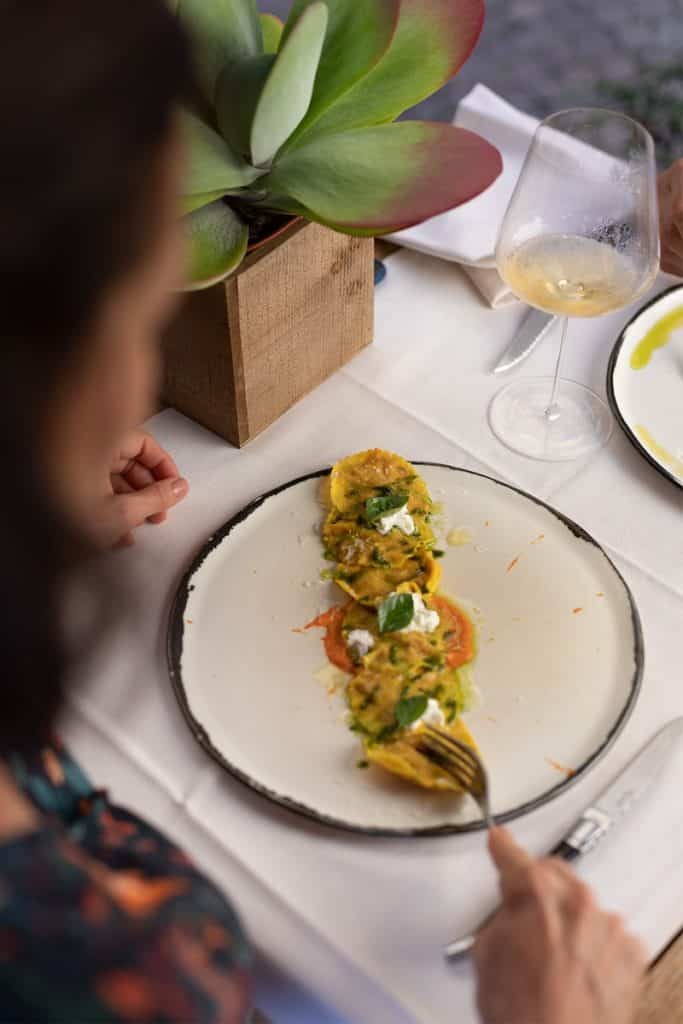We all have that friend: the one who, despite having known them for years, they maintain an air of mystery. Well, extra virgin olive oil the kitchen equivalent of that friend.
Olive oil needs no introduction — it’s a kitchen staple particularly in ones like ours that have a heavy focus on California and Italian flavors. And you probably know a thing or two about olive oil: like it’s a good fat loaded with antioxidants and that it’s an ingredient dating back to Grecian times.

9 Tips For Extra Virgin Olive Oil
But even if you cook with olive oil daily, you likely still have questions. Namely, how do you buy quality olive oil? Does olive oil go bad? Or should you buy extra virgin olive oil?
We’ve partnered with Lucini Italia on a 5-episode video series that journeys through Italy to follow their olives from tree to bottle and that answers all those FAQs.
Buy What You Need Now
The first thing to remember is that olive oil is a fruit juice; so, as opposed to something fermented like wine, olive oil does not get better with age. Instead of buying a lifetime supply of olive oil you’ll want to instead buy only what you’ll need for the next few months. Around here we buy 750 milliliter bottles of olive oil (the same size as a wine bottle) and that lasts us just about a month.
Just Say No To Clear Bottles
Heat, air, light, and time (aka H.A.L.T. to olive oil pros) are the biggest enemies of olive oil so you’ll want to do all you can to avoid subjecting it to those factors. One big way to safeguard olive oil is to only buy olive oil sold in a dark bottle or a metal tin, both of which shield it from light and help protect it in the long run.
Always Opt For Extra Virgin Olive Oil
The highest standard (and most regulated term) around olive oil is “extra virgin” — an indicator that the oil is free of defects and unrefined and hasn’t been treated with chemicals or heat. There is still a spectrum of quality within olive oils labeled extra virgin; however, the term is a benchmark that indicates a minimum level of quality of the olive oil. We buy extra virgin for everything from frying to roasting to garnishing dishes and think you should too!
Check The Harvest (Or Best By) Date
The best producers will indicate the olive oil’s harvest date or “best by” date because they want to ensure you’re consuming the highest quality and freshest product possible. In general we use our older olive oil for cooking and save our younger and fresher olive oil for garnishing.

Store Olive Oil Away From Heat And Light
One of the biggest faux pas we see our fellow food friends doing? Storing olive oil next to their stove. Is it convenient? Heck yes. But the tradeoff is that the constant exposure to heat is aging the oil at an accelerated rate.
Instead store your olive oil tucked in a nearby cabinet and pull it out as you cook with it to ensure it gets minimal exposure to the two biggest enemies: heat and light.
Cook With Abandon (But Don’t Smoke It)
There is a misconception out there that olive oil cannot be heated very high — that’s true and also not true. Olive oil can easily be used up to 425°F, which makes it fair game for pretty much any recipe on our site that doesn’t require broiling.
Use It Sooner Than Later
As Giorgio Franci says in the episode above, olive oil is best compared to freshly-squeezed orange juice in that it does not improve with age. So, buy smaller bottle — like the 500 ml and 750 ml sizes that Lucini sells — and open one at at time. That way the olive oil is used quickly and exposed to a minimal amount of heat, air, and light.
Don’t Use Rancid Oil!
You now know how to keep olive oil longer but how do you know if it’s still good? Olive oil is said to be rancid when it has an old or stale oil gets an off smell and flavor. Some say it smells like old band aids or baseball mitts while others say it has a petrol flavor.
Bottom line is if you haven’t stored your oil well and it has stale smells or flavors other than those most commonly associated with olive oil — like grassy notes, earthiness, or tomato leaves — you probably have rancid oil. Get in the habit of always tasting a spoonful of your olive oil before your start cooking so you ensure you’re not cooking with rancid oil.
Stock A Versatile Olive Oil
Don’t know where to start? Like with anything in the kitchen start with your most versatile option. We like the pungent and peppery flavor profile associated with Tuscan olive oils like Lucini’s Premium Select Extra Virgin Olive Oil and we use it for everything from cooking to making salad dressing and even garnishing a dish tableside.
See How Extra Virgin Olive Oil Is Made
Watch a few episodes below then scroll on for tips on how to buy it to how to store it and a few recipes where olive oil makes all the difference.
Go Behind The Bottle

Recipes To Cook With Extra Virgin Olive Oil
Now that you’re versed on all things premium extra virgin olive oil, here are a few of our favorite recipes where olive oil is a key ingredients:
- {Bibbonata Di Peperita} Tagliolini Pasta With Chilis, Parsley, Pine Nuts, and Bottarga
- Celery Salad with Parmigiano-Reggiano and Walnuts
- Creamy Polenta with Melted Peppers and Mushrooms
- Charred Asparagus With Requeson And Mexican Dukkah
- Exceptional Tomato Gazpacho
- {Minestrone Verde} Spring Minestrone Soup With Pistachio Parsley Gremolata
- {Pasta Alla Checca} No-Cook Heirloom Tomato Sauce with Burrata
- Persimmon, Fried Sage, and Goat Cheese Bites
- {Ravioli di Pappa Al Pomodoro} Homemade Ravioli With Pappa al Pomodoro
- Roasted Squash and Pepita Pesto Dip
- Slow-Roasted Tomato and Cilantro-Cashew Picnic Sandwich
Want to learn even more about olive oil? Head here to see how olive oil is made and to watch every episode of Behind The Bottle. And, in the meantime, we want to know what is your favorite way to use olive oil?
Sponsored Post: This content was sponsored by Lucini Italia but all content, ideas, and words are our own. Thanks for supporting these partners who allow us to keep Salt & Wind up and running.